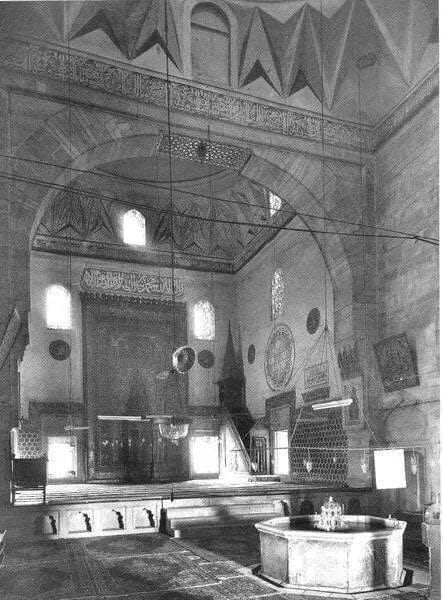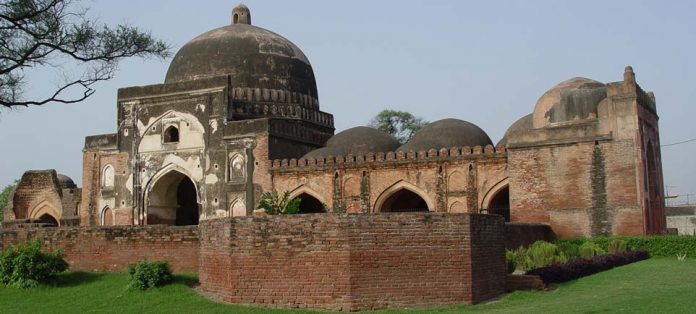By Misbahuddin Mirza
December 6, 1992, exactly 500 years after Christopher Columbus landed on Santo Domingo island in search of gold, the Kar Sevaks of the various right wing Hindutva parties climbed on the tranquil domes of the graceful Babri Masjid in Ayodhya, India, and tore the marvellous historic monument to rubble – all under the impotent eyes of the very police ordered to protect it directly by the Indian Prime minister Narasimha Rao.
The genesis was in 1972, when B.B. Lal resigned as the Director General of the Archaeological Survey of India (ASI), and started working at Gwalior’s Jiwaji University. He came up with a project called “The archaeology of the Ramayana sites.” In October 1990, Lal wrote an article for the ultra-right wing RSS group’s magazine Manthan, publishing a photo from the excavations that he had reportedly conducted in Ayodhya between 1975 and 1980. He claimed that this photo which showed several brickbat heaps, were bases of temple pillars that had been destroyed by Emperor Babar. Wouldn’t an ex-Director General of the ASI want to publish an article he considers important, published in a respectable archaeological journal that would be subject to peer review? Why did he instead choose to get it published in an ultra-right wing fringe magazine? Later, in 1998, in Croatia, Lal read a paper referring to his Feb 10, 1991 Vijayawada lecture suggesting to dig underneath the Babri Masjid to establish a relationship between the pillar bases excavated by him and the stone pillars that formed part of the Babri Masjid. This story was carried in the Hindustan Times, and was critiqued; Lal issued a rejoinder reiterating the need for the excavations. The courts could not ignore the statements of a former Director General of ASI. The Hindutva groups took over this issue – culminating in the destruction of the elegant mosque.

Archeologists Jaya Menon and Supriya Varma, witnessed a major portion of the excavations carried out by the ASI at the Ram janmabhoomi-Babri masjid site in Ayodhya in 2003. They represented the Sunni Waqf Board, a party to the Babri Majid Title lawsuit. They detail the many irregularities and outdated methods in ASI’s work, and published it in their article “Was there a temple under the Babri Masjid” Reading the archaeological ‘Evidence’” published in Economic and Political weekly, Vol 45, Issue No 50, 11 Dec, 2010. These respected archaeologists stress that there is little doubt that the kind of archaeology practiced by the statist ASI, where archaeologists see themselves primarily as bureaucrats, suffers from a serious absence of academic engagement and training.
Supriya Varma is a professor of archaeology at Jawaharlal Nehru University, and Jaya Menon heads the history department at Shiv Nadar University. Among several things, they also mention how the ASI workers were discarding the excavated animal bones – as Vaishnava temples are strictly vegetarian and the discovery of bones would contradict the ASI’s pre-conceived notions that the Babri Masjid was built on a Vaishnava temple. They also recorded the ASI workers discarding significant amount of excavated glazed ware (a certain ceramic pottery type associated with Muslim communities) which was evidence of Muslims’ habitation under the Babri Masjid area. Glazed ware would not be expected in a Vaishnava temple. Some of the conclusions of these esteemed archeologists’ are that “Most archaeologists in India, when it comes to the historical period, see archaeology in the role of affirming what is written in the texts or prevails in oral traditions. This was also the mindset behind the projects on the archaeology of the Ramayana and the Mahabharata……. Given the above, it is a futile task to literally equate events in the epics with archaeological data. For example, archeological findings of the remains of huts at the site of Bharadvaja Ashram, Allahabad, have been used to suggest that this was where Ram, Lakshman and Sita stayed before crossing the river Yamuna (Lal 2002: 41-42, 45-48).”

Speaking to Betwa Sharma in December 5, 2018’s Huffington Post, Professor Varma stated that there was no archeological evidence suggesting that there was a temple under the Babri Masjid. Further, Varma stated that the evidence actually pointed to older mosques existing underneath the Babri Masjid. Professor Varma explaining the ASI claims to Betwa Sharma, stated “There are three things. What the ASI has excavated is not evidence there was a temple underneath the mosque. One is this western wall, the second are these 50 pillar bases and the third are architectural fragments. The western wall is a feature of a mosque. It is a wall in front of which you say namaaz. It is not the feature of a temple. Temple has a very different plan. Underneath the Babri Masjid, there are actually older mosques. Now as far as these pillar bases are concerned, these are completely fabricated and we filed many complaints to the court about it. Our argument is that if you look at what they are claiming to be pillar bases, these are pieces of broken bricks and they have mud inside them. There is no way a pillar can even stand on it, it is so unstable. It’s a completely political issue. They wanted that report to say there are pillar bases and it said there are pillar bases.” “The third piece of evidence is these architectural fragments….. But, this sculptured piece has not even come from a stratified deposit…. It could have come from anywhere. There is no way of dating it. In other words, There is no evidence for a temple.”
Eminent scholar Omar Khalidi had called ASI as the handmaiden of Hindutva. Ashish Chadha submitted a PhD thesis on the ASI to the Department of Cultural and Social Anthropology at Stanford University in 2007 stated. “ASI to learn new methods of digging and new techniques of excavation. This makes people in the ASI insecure about new theories in archaeology. They are closed and uninterested in learning (Chadha 2007:90).” The ASI is the laughing stock of the world, and has absolutely no credibility among the intelligentsia.
It is high time for the Indian justices overseeing this case, to see the clear, unmistakable hand of the nefarious Hindutva brigade behind the ASI’s discredited, baseless findings to foist this monstrosity upon India’s minority, and to take immediate steps in rebuilding the Babri Masjid at the earliest.
Misbahuddin Mirza, M.S., P.E., is a licensed professional engineer, registered in the States of New York and New Jersey. He served as the Regional Quality Control Engineer for the New York State Department of Transportation’s New York City Region. He is the author of the iBook Illustrated Muslim Travel Guide to Jerusalem. He has written for major US and Indian publications.

